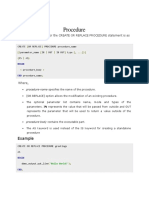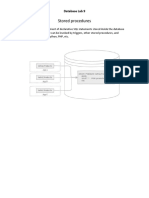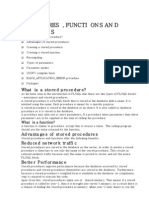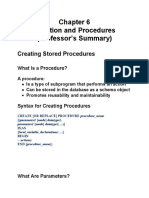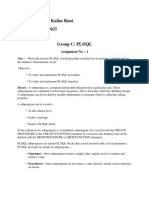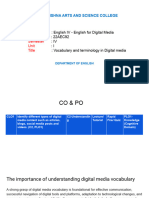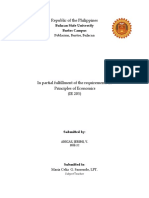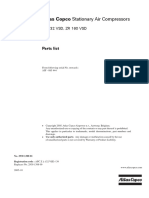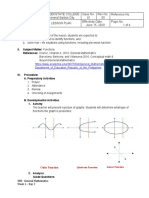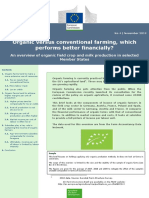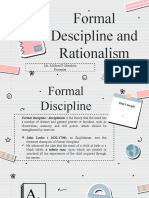0% found this document useful (0 votes)
25 views28 pagesUnit V - Functions - Procedures
The document discusses stored procedures and functions in Oracle databases. It covers creating procedures and functions, differences between anonymous blocks and subprograms, passing parameters to functions, and invoking functions with parameters.
Uploaded by
fictionlight30Copyright
© © All Rights Reserved
We take content rights seriously. If you suspect this is your content, claim it here.
Available Formats
Download as PDF, TXT or read online on Scribd
0% found this document useful (0 votes)
25 views28 pagesUnit V - Functions - Procedures
The document discusses stored procedures and functions in Oracle databases. It covers creating procedures and functions, differences between anonymous blocks and subprograms, passing parameters to functions, and invoking functions with parameters.
Uploaded by
fictionlight30Copyright
© © All Rights Reserved
We take content rights seriously. If you suspect this is your content, claim it here.
Available Formats
Download as PDF, TXT or read online on Scribd
/ 28






